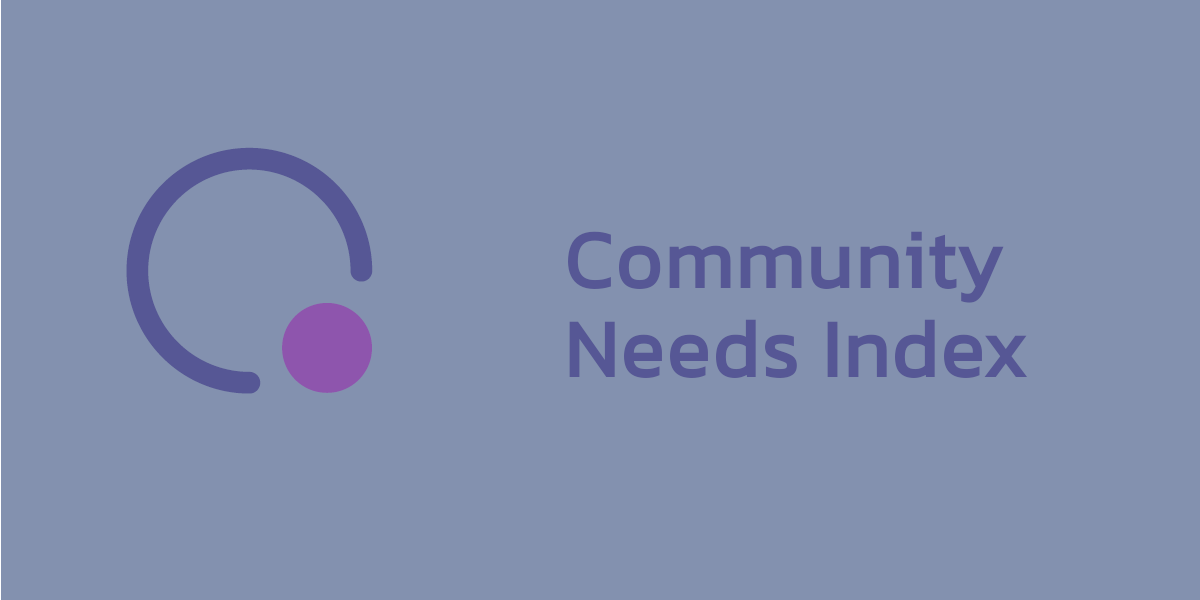
In 2018, we were commissioned by Local Trust to develop a quantitative measure of left behind neighbourhoods. As part of this research, we created the Community Needs Index 2019, designed to measure the cultural and social factors that influence people’s outcomes.
This framework has since been refined and updated as the Community Needs Index 2023, providing a clearer, data-driven picture of community challenges today.
This index has resonated with policymakers and analysts across central government, local government and civil society organisations – contributing to the formation of the now-defunct APPG for left behind neighbourhoods and used to allocate resources for the Know your Neighbourhood Fund.
We also since have worked with organisations to do a deep dive into the Community Needs Index for their area, looking at the drivers of community need, locating the areas that are most impacted and exploring the relationship between community need and deprivation. You can find out more about this research service here.
Following engagement with key stakeholders and a wider consultation, the index was refined in 2023. We have reviewed the geography, underlying indicators and weighting methodology used. Full details are available in the Technical Methodology Paper, and in this blog have summarised key changes.
Sign up to our Community Needs Index mailing list for all the latest news and analysis.
The Community Needs Index is an area based measure. Both experiences of the people in an area and the area’s amenities and assets contribute to its “community need” characteristics.
In the first iteration of the Community Needs Index we used 2017 Wards as the underlying geography. This is because Wards tend to be centred around existing neighbourhoods, they are a familiar geography to people and they have names attached to them.
However, there are challenges with using Wards as a geography. Wards change on an annual basis, and vary in size quite dramatically. There are also fewer datasets that are published directly at Ward level.

A choropleth map of the Community Needs Index, from Local Insight. On the left, LSOA boundaries from the Census, on the right, Ward boundaries.
To mitigate this, Community Needs Index 2023 uses 2021 LSOAs as the underlying geography. This was favoured by 58.3% of respondents to the consultation. LSOAs offer a number of advantages over wards. Most notably, they only change every 10 years (and even then, only around 5% of areas change).
They are also more homogenous in size and as they are usually smaller than wards, they are better placed to identify needs in rural areas.
It is important to be aware that this means that the Community Needs Index 2019 and Community Needs Index 2023 are not directly comparable and can not be analysed to show change over time.
For the Community Needs Index 2023, we reviewed the underlying indicators to assess whether they:
Where possible we have maintained consistency with indicators from 2019, simply updating data to the most recent time-point when available.
In some cases we have replaced indicators if more up-to-date or robust indicators were available from alternative sources. We have also added some new indicators, where they can strengthen the index by capturing a different facet of community need.
Below is a summary of new indicators that have been included in Community Needs Index 2023. For full details of the underlying indicators, please see pages 10 – 21 in the Technical Methodology Paper.
A crucial part of developing an index is making decisions on how indicators will be weighted and there are a number of approaches for this.
The first iteration of the Community Needs Index gave an equal weighting to each of the indicators in a domain.
The Community Needs Index 2023 uses Maximum Likelihood Factor Analysis to determine the weights of the indicators within each domain. Maximum Likelihood Factor Analysis can uncover the hidden factors that influence indicators and help understand how they relate to each other. More detail on the methodology can be found on pages 26 – 32 of the Technical Methodology Paper.
In order to use this technique, the Connectedness domain was split into two sub-domains (physical connectivity, wider connectivity) as was the Active and engaged community domain (Civic participation, Civic activity).
The Community Needs Index is exclusively accessed within Local Insight – the place-based data insight platform from OCSI. Book a demo to find out more.
Following the release of the second Everybody needs good neighbourhoods report, Stefan…
More
We are proud to have contributed towards the Everybody needs good neighbourhoods…
More
The Community Life Survey (CLS) is an annual survey commissioned by the…
More